How student choice can support literacy
 English teacher Laela Warnecke set out to answer one question: “How might sustained silent reading impact 8th graders?”
English teacher Laela Warnecke set out to answer one question: “How might sustained silent reading impact 8th graders?”
Warnecke examined the effect of sustained silent reading on the engagement and achievement of her students. She surveyed her students and helped them set aside time during the day to read whatever they wanted. And it turned out that her so-called “reluctant readers” weren’t all that reluctant after all.
This is a story about student choice, student engagement, and how action research can impact student outcomes.
Action research into Sustained Silent Reading

Full transcript below.
My name is Laela Warnecke, and I’m a middle school educator in Poultney.
I teach English.
Before we get started, most, if not all of us in this room are teachers. So I’d like for you to just close your eyes if you’d like and think about a moment in your life where you had maybe an epiphany and you realized, “Wow, teaching is exactly what I’m meant to do and I am so excited that I chose this as my vocation.”
For me that moment came when I was in a course titled Shakespearean Tragedies.
It was at Castleton University, where I completed my undergrad, and we were sitting in a circle discussing Titus Andronicus and I caught sight of my professor and she was so engaged and enthralled with the conversation and I thought, “Wow, she loves her job.” She gets to collaborate with authentic learners everyday who are involved in the process and engaged and she gets paid to do this. And then I thought, “Wow, I’m going to be an English teacher and I’m going to have the same opportunities.”
Then I started to do middle school. And I realized that not everything is as organized as I maybe thought.
This picture right here was taken when I went outside to talk to the principal for a second and I came back in and all of the boys in the class had assembled themselves in a dogpile in the corner of the room: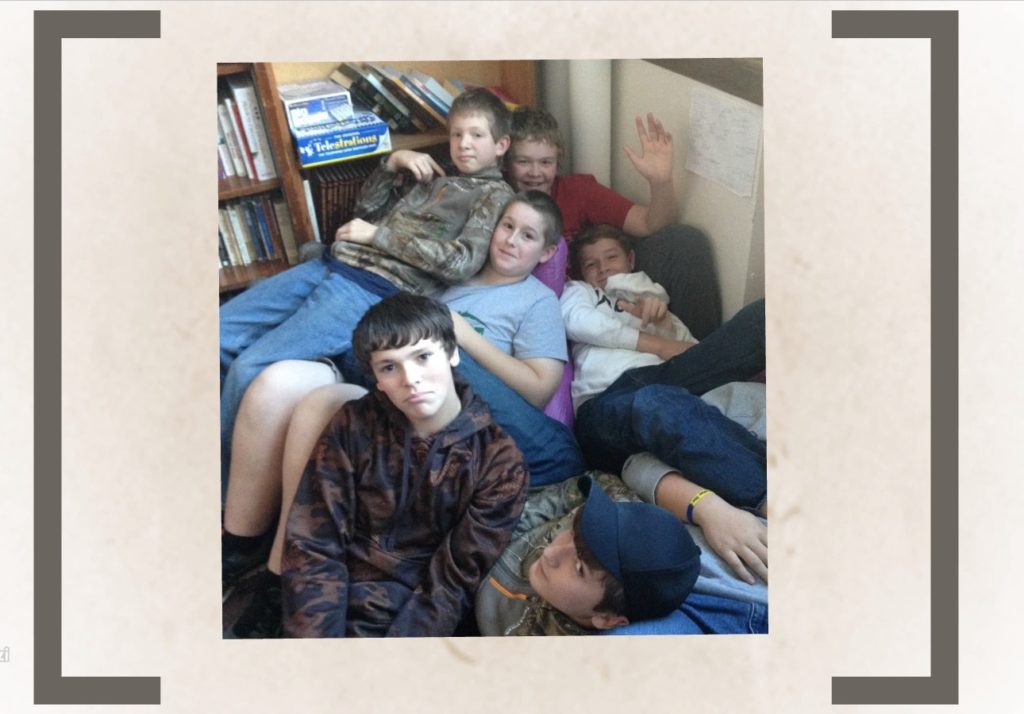
It was maybe 30 seconds that I was out. So I realized right off the bat that teaching was not exactly what I had in mind but I learned to roll with the punches. We can all kind of laugh about the chaos of middle school but one thing that I think we can’t really laugh at is the idea that many students claim to hate reading.
They don’t like doing it, they think it’s a painful experience, they believe that they’re not good at it, they’ll never be good at it. By the time they meet me in the 8th grade, they’re completely disengaged.
When I was going into my second year of teaching, I wanted to determine if there was a method that I might use to engage those reluctant readers and mostly to allow them to see that reading isn’t this painful experience, but reading can be something authentic and something that you can continue with past school.
Those lead to my goals as an educator.
The main goal was that I really wanted to share my love of literature, and create an authentic classroom where students are really engaged in the same way I am with stories and other texts that we’re reading. Mostly I really want to collaborate with thoughtful, authentic learners and as I said before, nurture lifelong readers.
And then I came across the method of sustained silent reading.
There are many different models of sustained silent reading but in a nutshell, it’s a time of the day where students are given the opportunity to read, for the most part, whatever they would like to read.
There’s not accountability with sustained silent reading in its most simplest form. The big thing is that students are allowed to choose what they want. And all of those buzz words that we talk about come up with sustained silent reading: there’s student choice, student self-direction, flexible pathways, diversity and a democratic classroom.
This particular student right here is engaged in sustained silent reading:
This student (whose name is Lucas) was a very reluctant reader at the beginning of the year. But this was taken in April and he’s just completely lost in The Lion, The Witch, and The Wardrobe.
How might sustained, silent reading impact 8th grade students?
I wanted to be able to quantitatively measure students’ attitudes toward reading, so I had to do some research on that to determine how I might go about it. I also wanted to be able to engage through some qualitative research and conversational interviews to find out the stories behind negative attitudes towards reading. What happened before 8th grade that caused these students to come up to me — and say to my face — “I hate reading, I really don’t want to do that.”
Methods
I decided to administer a survey before the sustained silent reading period, and then give the same survey after sustained silent reading to see if there was any sort of change.
The population of students that I worked with are twenty-eight 8th graders. I had 16 males and 12 females. Three total classes, which I call the Oak, the Birch and the Maple classes. Eight students had individualized education plans, all of which are designated as reading specific.
Elementary Reading Attitude Survey
I came across a fantastic survey: The Elementary Reading Attitude Survey which many of you maybe have seen. Students completed this survey in September of 2015 and then completed it at the end of June in 2016.
There are 20 questions in total. Two subscales; the first 10 questions focus on recreational reading or reading at home, and the last 10 questions focus on academic reading. They all begin with the phrase, “How do you feel when.”
Okay. This particular example is, “How do you feel when you read a book on a rainy Saturday?”
If a student circled “Really angry Garfield,” they would get a score of one and if they scored “Really Happy Garfield,” they’d get a score of four. It’s a one to four Likert Scale. This survey is really great because there isn’t that middle option that so many students tend to circle when they’re not really sure. It allowed me to get some really great data in regards to my students’ attitude toward reading.
Scoring the survey is very simple: you take a look at the raw score for each subscale and there’s a really great percentile chart. You can see where students fall on that percentile chart in regards to their attitudes toward reading.
Motivation to Read Profile
In order to gather some qualitative data, I carried out a Motivation to Read Profile. There’s two parts to that. The first is sort of quantitative measures and then the second is a conversational interview. It’s just really simple, open questions you can ask students about reading and how they feel when they read. So if a student loved reading on a rainy Saturday but hated reading in school, I was able to kind of probe and see why. What has happened in this student’s past to make this occur and how might I change it while I’m with this student in my classroom?
Observation Journal
I also kept an observation journal as well. I also wanted to see – because I know that there’s a correlation between attitude and achievement — how might increased attitudes toward reading increase student achievements towards reading.
Achievement Data
I made a decision to use the Smarter Balanced Assessment Consortium (SBAC) to measure changes in achievement, because it’s the standardized test that our school uses and I also knew I’d be able to get a lot of detailed data from that test. The pre-sustained silent reading data I used was the student’s 7th grade SBAC scores and then the post data was the student’s 8th grade scores. The independent variable of the study was SSR and the method was really simple. It was 20 minutes per week. That’s it.
It happened every Thursday and whenever the weather was nice, as you can see here, we went outside:
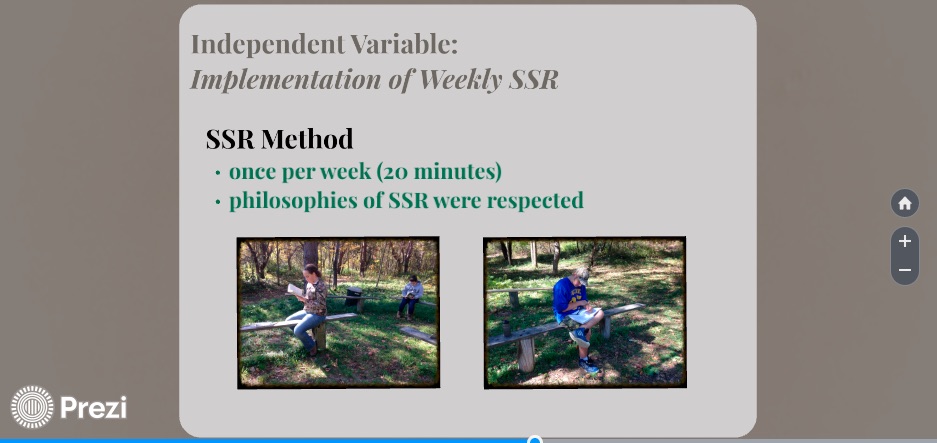
Philosophies of sustained silent reading were respected, specifically student choice and flexible pathways. If a student chose a book that he or she really didn’t like, they were able to toss it aside and try something new. And that’s something that doesn’t often happen in the ELA classroom. Generally they’re kind of stuck to that book, especially if it’s part of the core curriculum and we’re all reading it together as a class.
Quantitative Results
This chart represents the average score for each question on that Garfield survey focused on recreational reading:
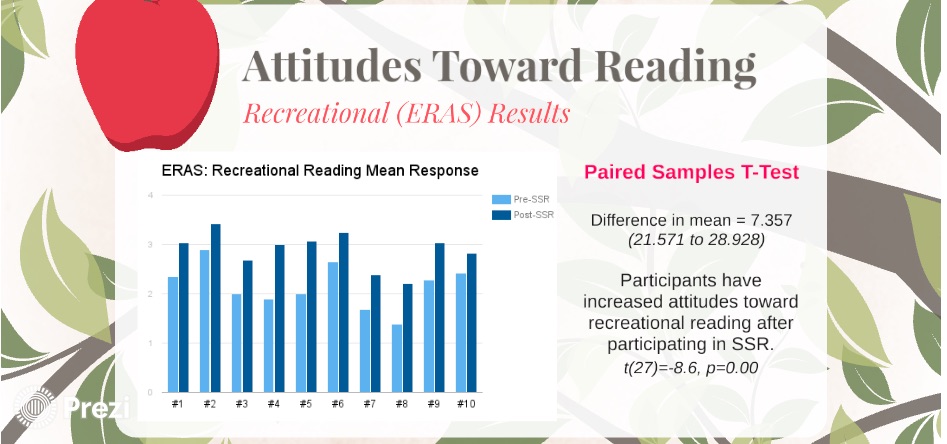
Light blue bars represent the average response before sustained silent reading and the dark blue represent after sustained silent reading. As you can see, every single question went up.
And the increase for the overall score was an increase of 7.357 which might not sound substantial but on a one to four Likert Scale and only ten questions, that’s pretty powerful. I was able to determine that after sustained silent reading, participants had an increased attitude toward recreational reading.
Worth mentioning:
- students who loved reading at the beginning, they loved reading at the end. There wasn’t any negative effect.
- students who hated reading in the beginning, many of them loved reading in the end.
This is the second part of the Garfield survey, focused on academic reading:
Same thing, light blue represents pre-SSR, dark blue is post-SSR. As you can see, every single question went up. The increase was a little bit smaller but still, a 6.286 increase.
As I mentioned before, the creators of that Garfield survey created a percentile chart and they came up with a method for teachers to be able to assess all of their students and then determine their overall classroom percentile rank. Before sustained silent reading, my overall class percentile rank was the 20th percentile, which is fairly low. After SSR, the overall class percentile was 66 which is a massive jump.
It’s also worth mentioning: research has tended to show that students’ negative attitudes toward reading increase as they get older, but this particular data is antithetic to that trend.
Qualitative Results
In the face-to-face conversations with my students, six themes emerged:
- self-perception
- motivation to read (at school)
- motivation to read (at home)
- past experiences with reading
- students’ mindset toward reading (Do they think, you know, can they get better or do they feel like they’re locked into that category of bad reader?)
- self advocacy (Do they understand their needs as readers and their own interests?)
This table represents the themes before sustained silent reading:
The red bars are negative comments and the green bars are positive comments. So for example, if a student said, “I love to go home and read a good book before I go to bed,” they would get a positive score for motivation to read at home. If a student says something like, “I’m horrible at reading and I’ll never be good at reading,” they would get a negative score for mindset.
It’s hard to really capture the shift through data like this. But from working with my students, from sitting down with a student who told me, “I suck at reading, I’m not going to like this class, I’m going to be honest right at the beginning,” to seeing that same student huddled up with a book, asking me if he can bring it home over summer? That’s a big change. And that really can’t be captured in the data.
Effect on Academic Achievement
My goal was to bring sustained silent reading to the school, not just my classroom. I wanted to see how students’ scores on the SBAC changed. So before SSR when students took the SBAC, the population that I studied, 40.7 of them received a level 1 score. Which is a big deal. I needed to definitely pay attention to that at the beginning of the year.
As you can see over here, after SSR, only 7.4 students received a one and out of the current total population, that was two students in total. There was a massive shift in student achievement. I know that the SBAC isn’t perfect but this is data to demonstrate that student achievement has increased. It’s also worth mentioning that every single scale score increased for every single student on the SBAC after sustained silent reading.
Conclusion
All data aside, the biggest thing is teacher’s intuition. As I said before, I feel that I am now surrounded by skilled, passionate, habitual, critical readers. Even though middle school is a little bit chaotic, I think that sustained silent reading has made my job that much better.
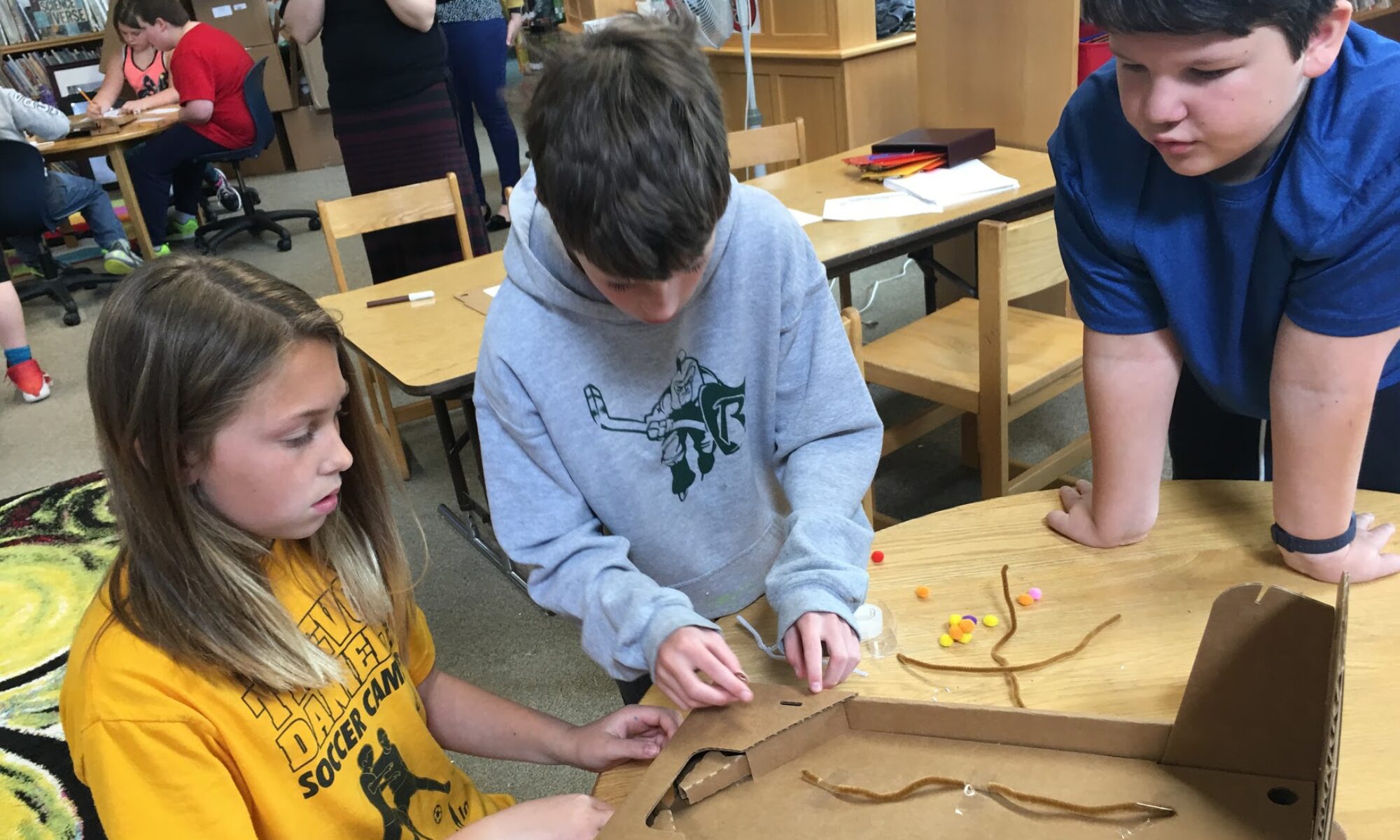

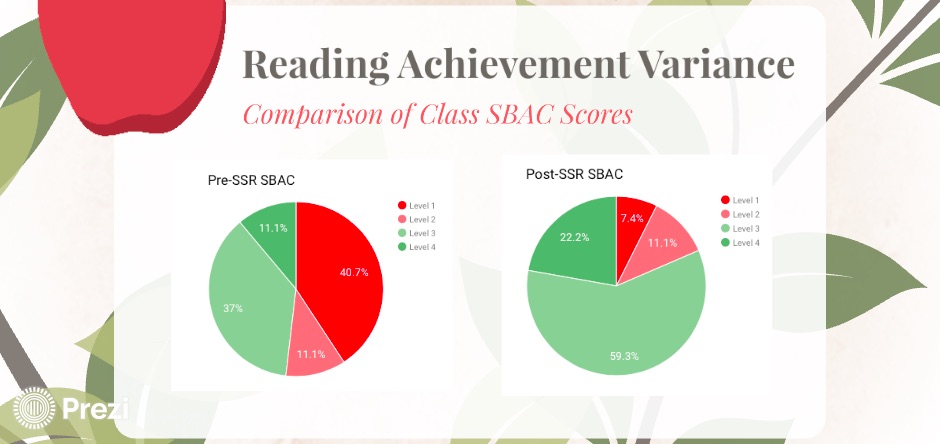
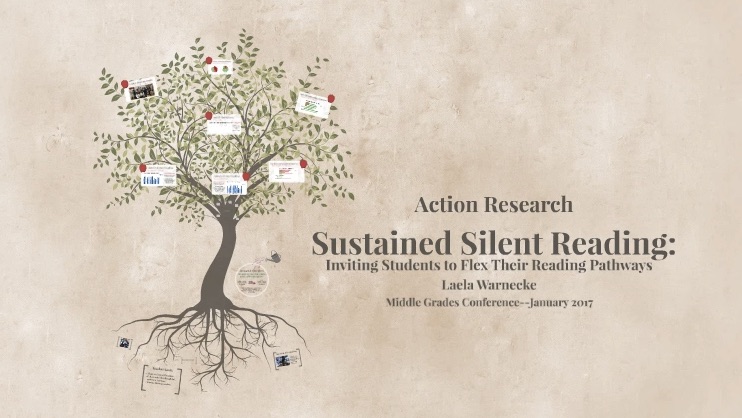

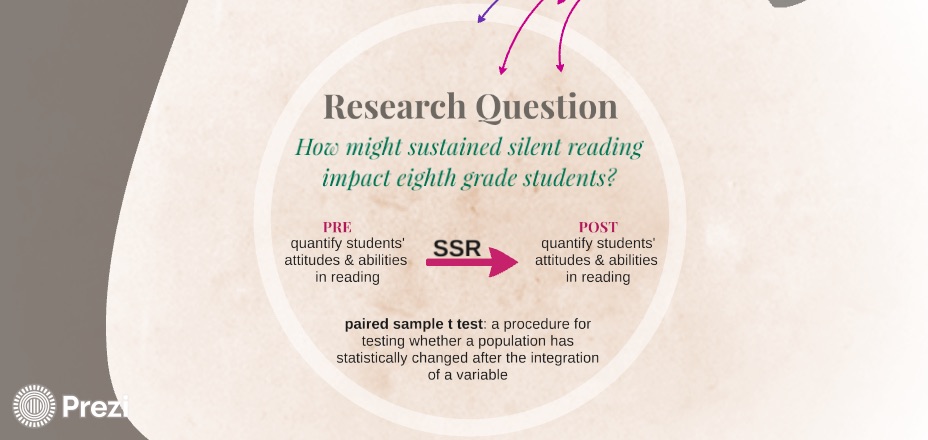
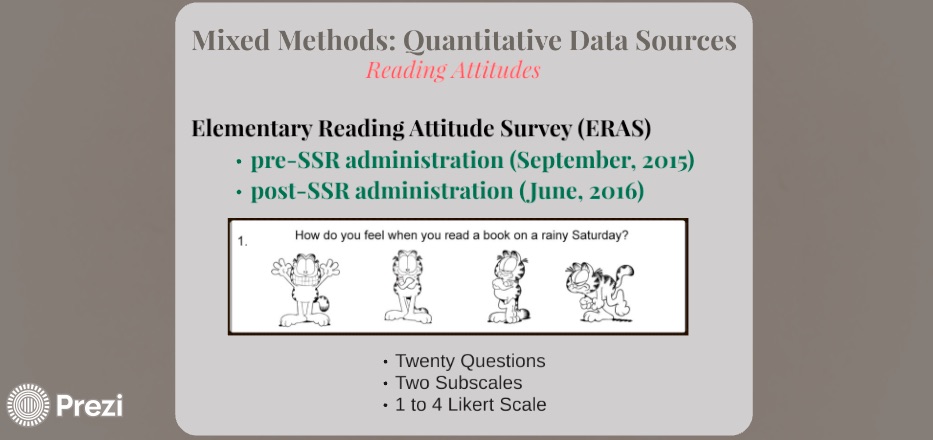
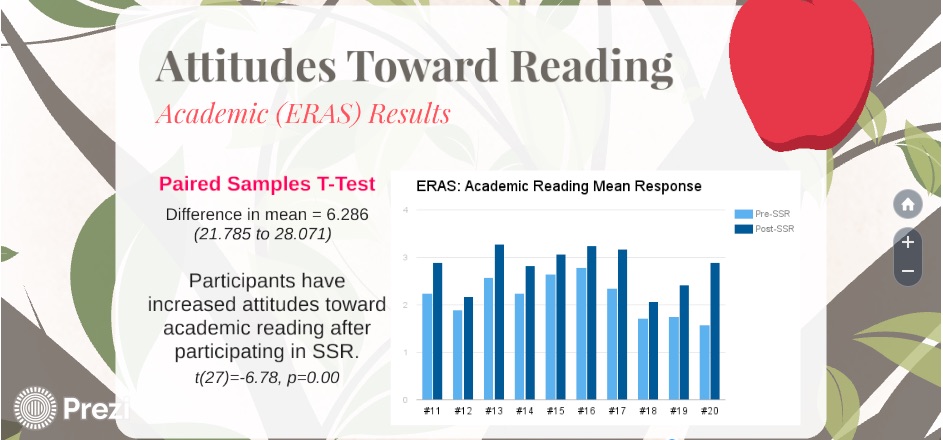
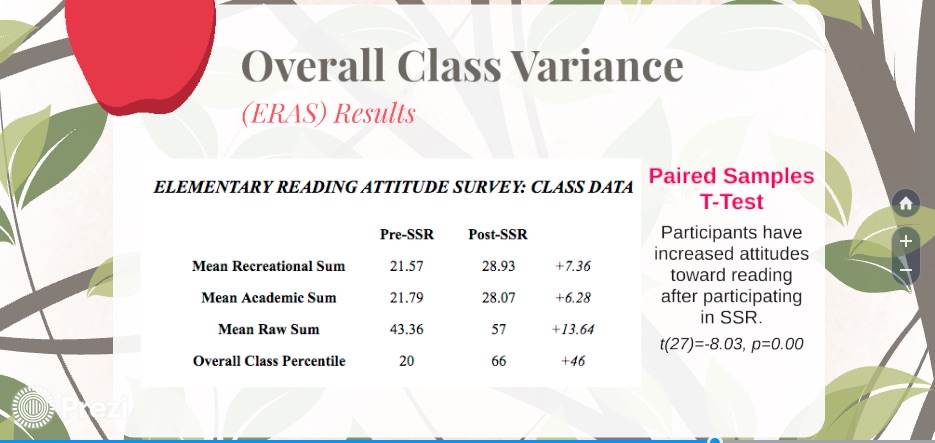
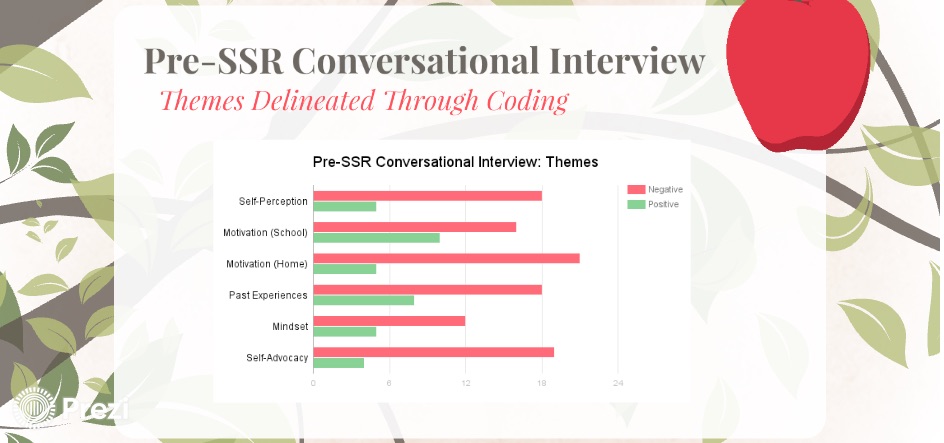
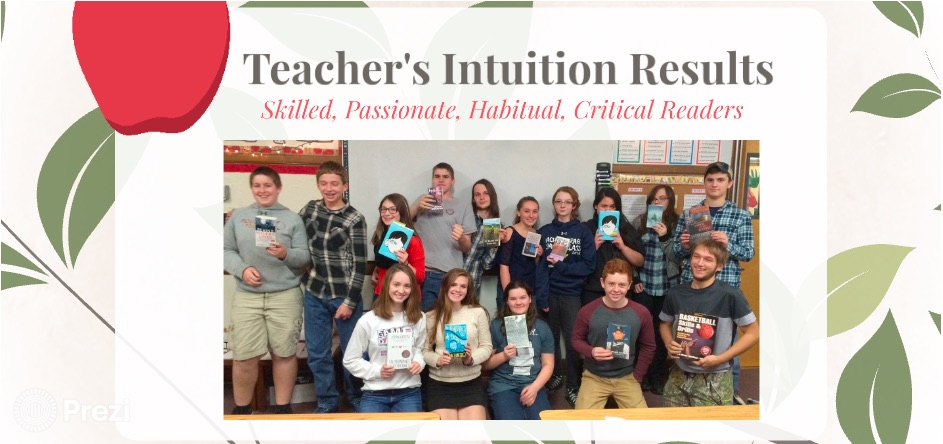
Thank you for your sharing. I am worried that I lack creative ideas. It is your article that makes me full of hope. Thank you. But, I have a question, can you help me?